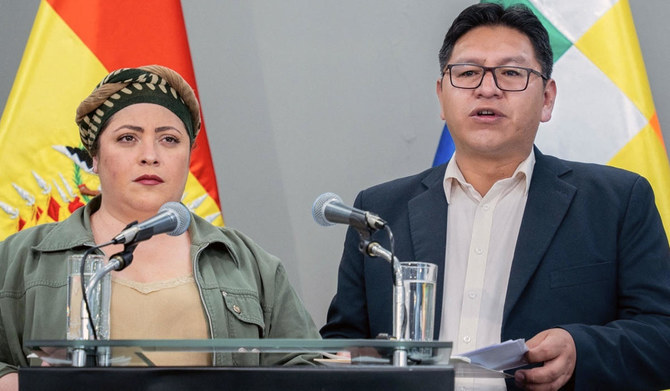LA PAZ: Bolivia’s government said it had broken diplomatic ties with Israel on Tuesday, accusing Israel of committing crimes against humanity in its attacks on the Gaza Strip.
Bolivia “has decided to break diplomatic relations with the Israeli state in repudiation and condemnation of the aggressive and disproportionate Israeli military offensive taking place in the Gaza Strip,” Deputy Foreign Minister Freddy Mamani announced at a press conference.
Mamani added that Bolivia was calling for a cease-fire and an end to “the blockade that prevents the entry of food, water and other essential elements for life.”
Interim Foreign Minister Maria Nela Prada said the press conference had been called “in reference to the crimes against humanity being committed in the Gaza Strip against the Palestinian people.”
The Israeli foreign ministry did not immediately respond to a request for comment.
Bolivia is among the first countries to actively break diplomatic relations with Israel over its war in Gaza, retaliation for an Oct. 7 attack in southern Israel by Palestinian Hamas militants that Israel says killed 1,400 people and took 240 hostages.
The South American country had previously cut diplomatic ties with Israel in 2009 under the government of leftist President Evo Morales, also in protest of Israel’s actions in Gaza.
In 2020, the government of right-wing interim President Jeanine Anez reestablished ties.
Tuesday’s announcement came hours after Morales on social media pressured current President Luis Arce to condemn Israel and declare it a terrorist state.
On Monday, Arce met with the Palestinian ambassador to Bolivia.
“We reject the war crimes being committed in Gaza. We support international initiatives to guarantee humanitarian aid, in compliance with international law,” Arce said on social media on Monday.
Gaza health authorities say that 8,525 people, including 3,542 children, have been killed in Israeli attacks since Oct. 7. UN officials say more than 1.4 million of Gaza’s civilian population of about 2.3 million have been made homeless.
The Israel military has accused Hamas, which rules the narrow coastal territory, of using civilian buildings as cover for fighters, commanders and weaponry, accusations it denies.
































